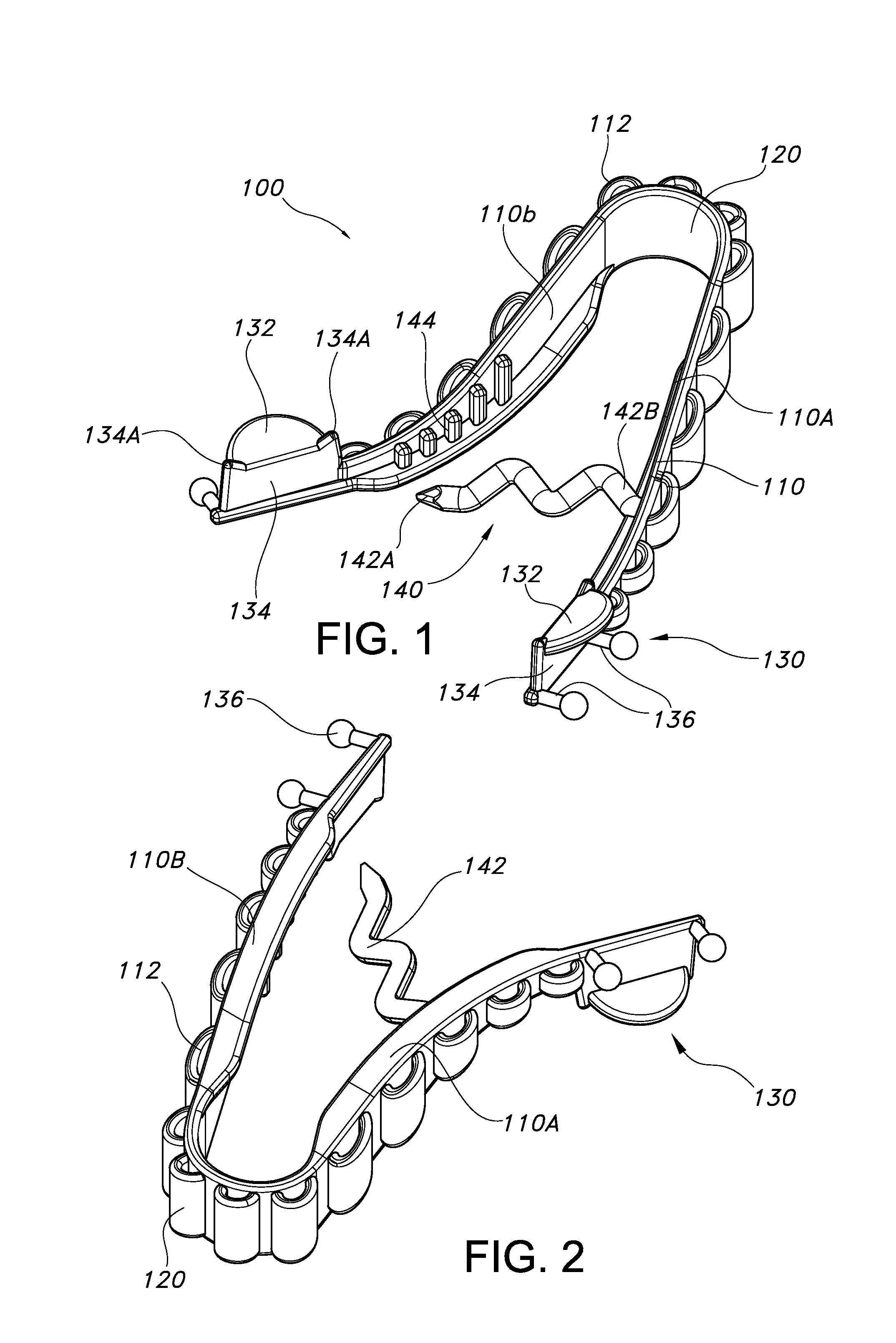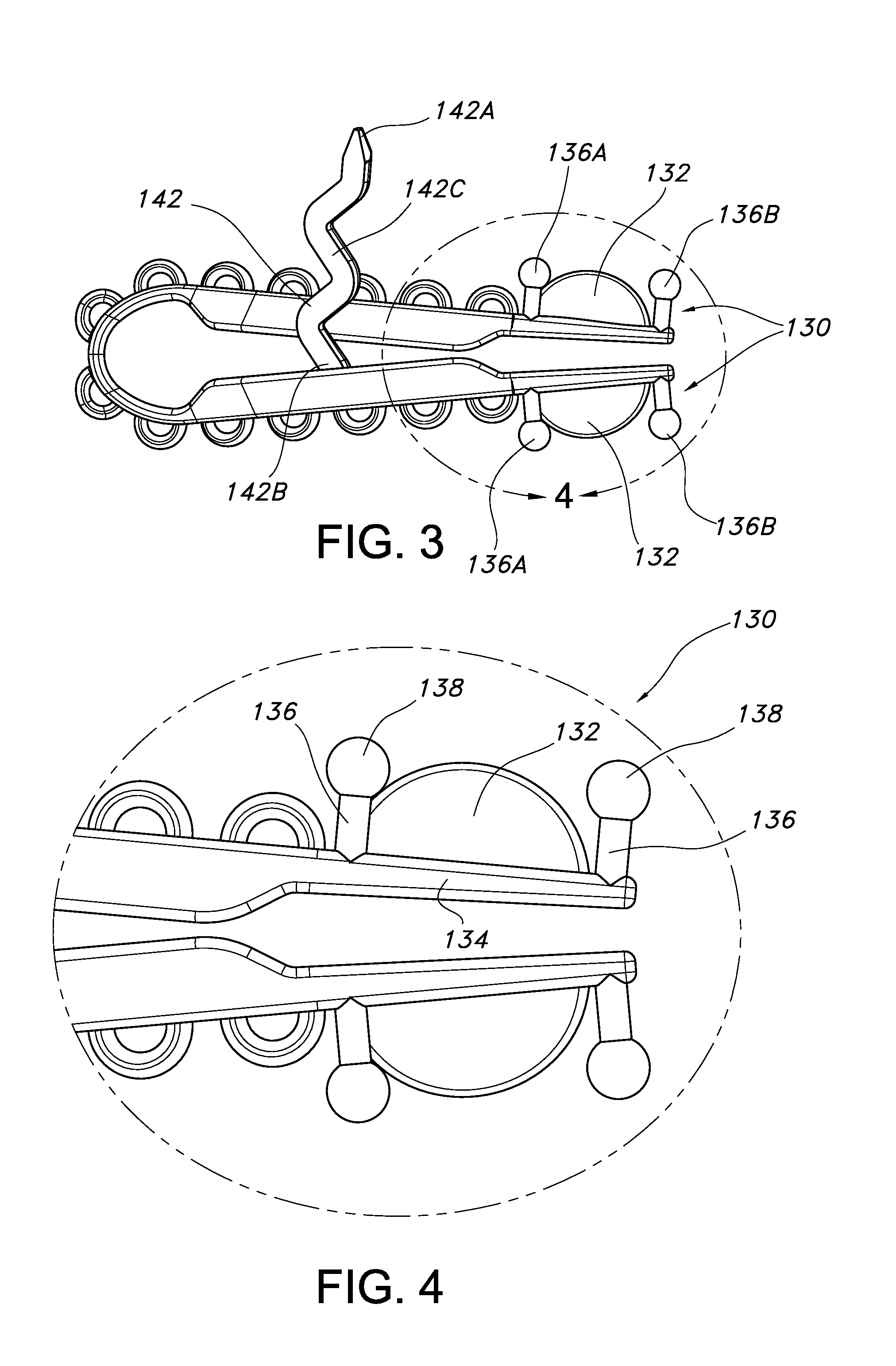Retractor device
a technology of a retractor and a lid is applied in the field of retractors, which can solve the problems of wide operating window closing suddenly and unexpectedly, affecting the safety of patients, so as to avoid uncomfortable pressure points in the patient's brows or cheeks, avoid contributing to the risk of ptosis or drooping lids, and stiffen the devi
- Summary
- Abstract
- Description
- Claims
- Application Information
AI Technical Summary
Benefits of technology
Problems solved by technology
Method used
Image
Examples
first embodiment
[0030]FIGS. 1 and 10 show perspective views of two embodiments of a retractor device according to the invention. The first embodiment is a retractor device 100 with a bracing means and the second a retractor device 200 without bracing means. Common to both embodiments 100 and 200 is a single-piece molded construction that provides economic advantage as well as improved functional design over conventional retractor devices.
[0031]FIGS. 2-9 illustrate various features of the first embodiment retractor device 100. The retractor device 100 has an overall U- or V-shape and is a unitary molded piece comprising a pair of arms 110, a hinge 120, retraction means 130, and anti-close brace means 140, whereby all of the elements 110-140 are integrated into the molded construction of the piece.
[0032]The pair of arms 110 include arms 110A and 110B. Each arm 110A, 110B terminates at its respective distal or free end in the retraction means 130; the opposite ends of the arms 110A, 110B are joined to...
second embodiment
[0038]The terms “upper” and “lower”, as used to designate the arms 110, are relative terms, depending on whether the retractor device 100 / 200 is being inserted in the right or left eye. In other words, the arm 110A as shown in FIGS. 1 and 2 is an upper arm when the device is inserted into the left eye of a person and a lower arm when inserted into the right eye. The arms 110 are squeezed together to bring the retraction means 130 on each arm close to the other, as shown in FIG. 3. The tongue blade 132 of the upper arm is inserted under the upper eyelid and the tongue blade 132 of the lower arm inserted under the lower eyelid. The retainer posts 136A and 136B provide the advantage that they do not obscure the greatest part of the window or restrict unnecessarily the angle of insertion during the insertion step. The area of insertion is further increased in the second embodiment, with the curved geometry of the deflector 234. This improves the ability of the surgeon or technician to v...
PUM
 Login to View More
Login to View More Abstract
Description
Claims
Application Information
 Login to View More
Login to View More - R&D
- Intellectual Property
- Life Sciences
- Materials
- Tech Scout
- Unparalleled Data Quality
- Higher Quality Content
- 60% Fewer Hallucinations
Browse by: Latest US Patents, China's latest patents, Technical Efficacy Thesaurus, Application Domain, Technology Topic, Popular Technical Reports.
© 2025 PatSnap. All rights reserved.Legal|Privacy policy|Modern Slavery Act Transparency Statement|Sitemap|About US| Contact US: help@patsnap.com



